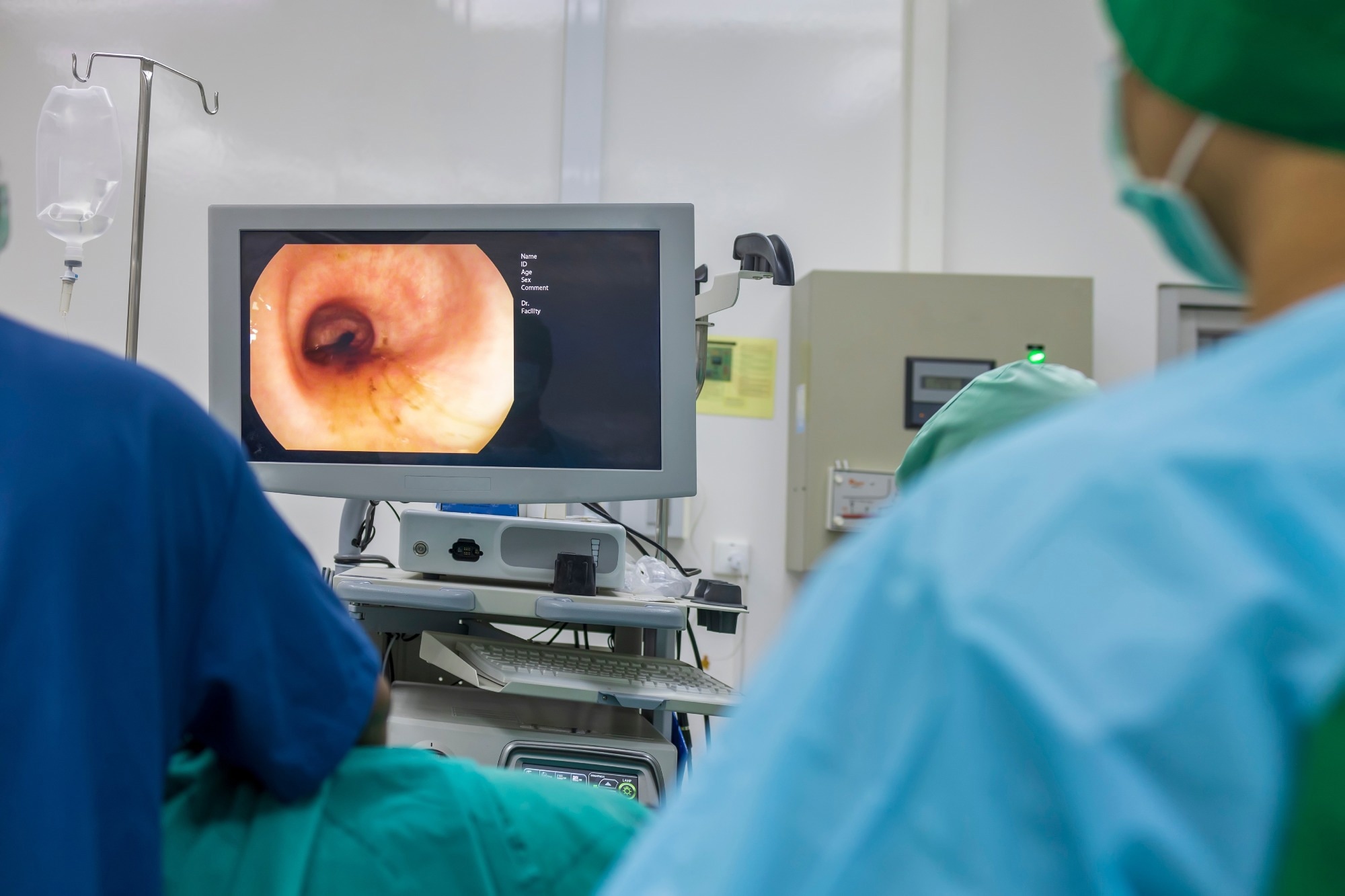In a recent study published in the journal EClinicalMedicine, researchers in China conducted a systematic review followed by a meta-analysis of studies describing the use of artificial intelligence (AI) based methods to detect colorectal neoplasia during colonoscopies to understand its success in enhancing adenoma detection rates and lowering adenoma miss rates.
 Study: Artificial intelligence for colorectal neoplasia detection during colonoscopy: a systematic review and meta-analysis of randomized clinical trials. Image Credit: Peter Porrini / Shutterstock
Study: Artificial intelligence for colorectal neoplasia detection during colonoscopy: a systematic review and meta-analysis of randomized clinical trials. Image Credit: Peter Porrini / Shutterstock
Background
Colorectal cancer is one of the three most prevalent forms of cancer across the globe and a substantial contributor to cancer-related mortality rates. The early detection of adenomatous polyps through colonoscopies and their removal is one of the chief methods to reduce the incidence of colorectal cancer. While an adenoma detection rate increase of 1% often correlates to a 3% lower risk of colorectal cancer, the variation across endoscopy services also results in an approximately 27% adenoma miss rate due to cognitive or technical limitations.
Artificial intelligence-based methods have been extensively explored in recent times to standardize the detection of polyps during colonoscopies to circumvent human error. However, apart from inconsistent results from studies examining the use of AI-based adenoma detection tools, concerns also exist about the overdiagnoses of polyps, leading to unwarranted patient burden and costs. Additionally, potential problems with endoscopic training and endoscopist distraction also present challenges.
About the study
In the present study, the researchers conducted an extensive search for randomized controlled trials evaluating the advantages and disadvantages of using AI-based systems for detecting adenomas and comparing them to standard colonoscopy-based detection methods. This comprehensive review and subsequent meta-analysis aimed to improve our understanding of AI-based detection methods for colorectal neoplasia.
Studies were included in the systematic review if the colonoscopy being conducted in the enrolled participants was for primary screening, symptoms, or surveillance, and the studies compared AI-based colonoscopy methods with conventional colonoscopy methods. Furthermore, only randomized controlled trials that reported outcomes relevant to this study were included. Studies involving patients with hereditary polyposis syndromes or inflammatory bowel disease were excluded.
The outcomes of interest were adenoma detection rate, adenoma miss rate, and adenomas detected in each colonoscopy. These primary outcomes were also stratified by morphology, pathology, location, and size. The secondary outcomes of interest were polyp detection rate, polyp missed rate, procedure time, false alarms, adverse events, and the number of polyps detected in each colonoscopy.
Data extracted from the studies included characteristics of the patients, the study, intervention, detected polyps and adenomas, and the primary and secondary outcomes. For tandem trials, only the first colonoscopy data was used for the meta-analysis to prevent the carryover effect. The heterogeneity between studies was quantified using prediction interval, and subgroup analyses and meta-regression were conducted to understand the potential heterogeneity sources.
Results
The results showed that the use of AI-based colonoscopy methods resulted in significant enhancement of colorectal neoplasia detection and substantially lowered the adenoma miss rate and polyp miss rate. The studies using AI-enabled colonoscopy also reported a significant elevation in polyp detection rates and adenoma detection rates and in the number of adenomas and polyps detected during each colonoscopy.
The polyp miss rate from AI-based colonoscopy methods was 52.5% lower, while the polyp detection rate was found to be 23.8% higher. Compared to conventional colonoscopy methods, the number of polyps detected per colonoscopy was 0.271 higher. However, the studies showed substantial heterogeneity with regard to the outcomes related to polyp detection.
Similarly, the adenoma detection rate and the adenoma miss rate showed an increase of 24.2% and a decrease of 50.5%, respectively, when employing AI-based colonoscopy methods. Additionally, about 0.202 more adenomas were detected per colonoscopy using AI-enabled adenoma detection methods. However, similar to polyp detection outcomes, the results from the randomized controlled trials also showed significant heterogeneity in the results.
Conclusions
Overall, the findings suggested that using AI-enabled colonoscopy could significantly improve the detection of adenomas and colorectal neoplasia. Furthermore, slight improvements in the quality of colonoscopies could translate to potential net gains in large-scale screening programs for colorectal cancer while maintaining the homogeneity and quality of colonoscopies.
The researchers also discussed future research implications of these findings, including the need for longitudinal studies to confirm the efficacy of AI-based colonoscopic adenoma detection methods in lowering the morbidity and mortality associated with colorectal cancer.
Journal reference:
- Lou, S., Du, F., Song, W., Xia, Y., Yue, X., Yang, D., Cui, B., Liu, Y., & Han, P. (2023). Artificial intelligence for colorectal neoplasia detection during colonoscopy: a systematic review and meta-analysis of randomized clinical trials. EClinicalMedicine, 66. https://doi.org/10.1016/j.eclinm.2023.102341, https://www.thelancet.com/journals/eclinm/article/PIIS2589-5370(23)00518-7/fulltext